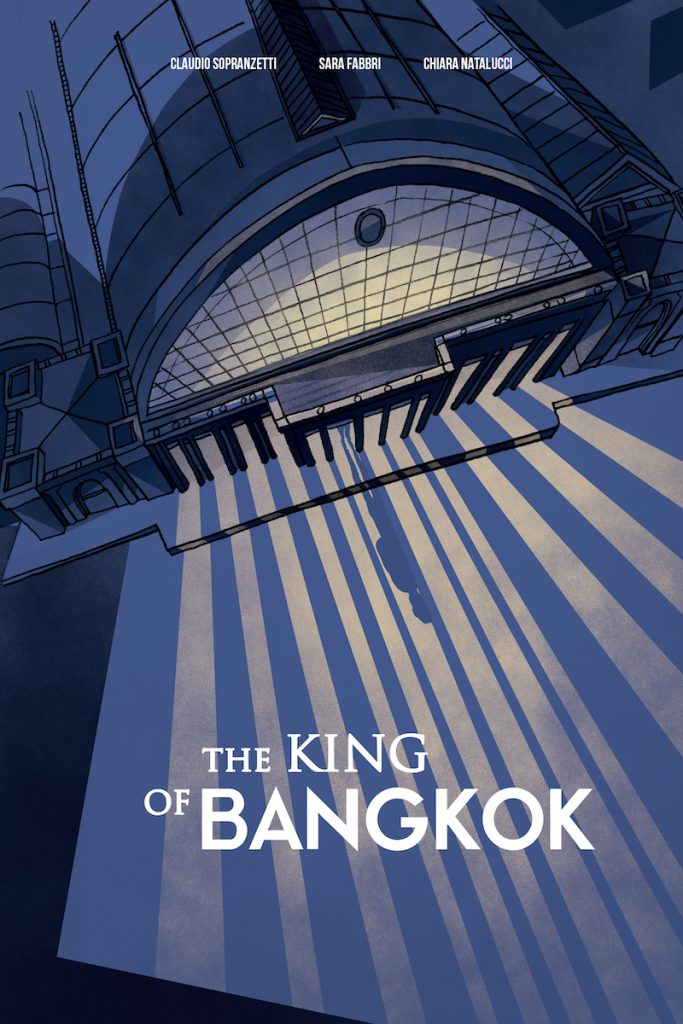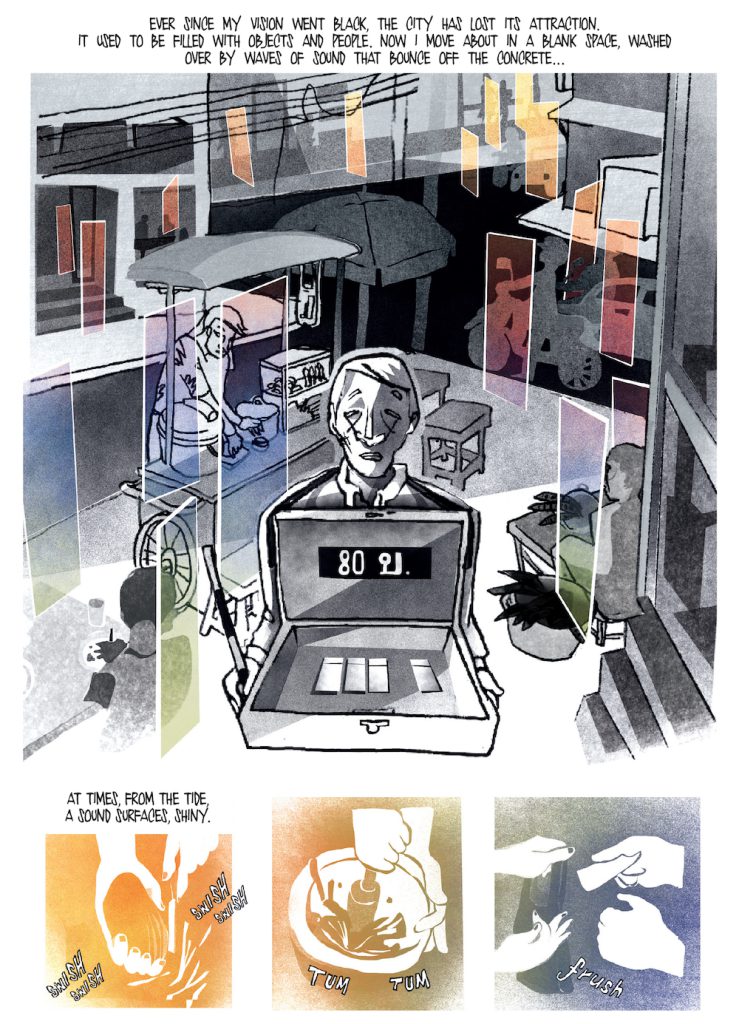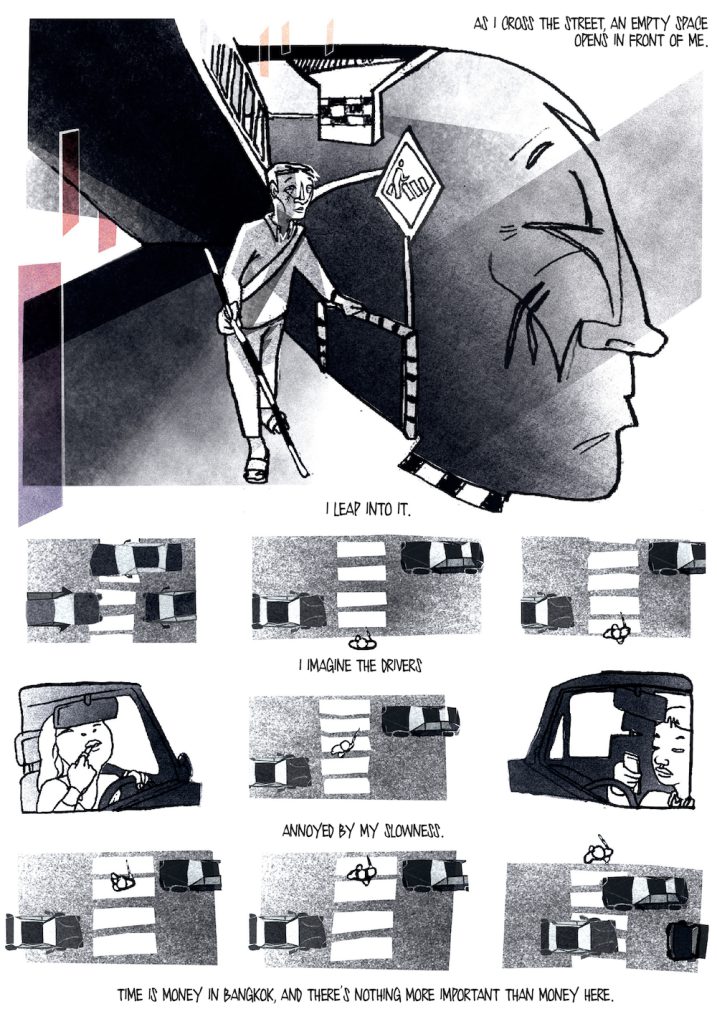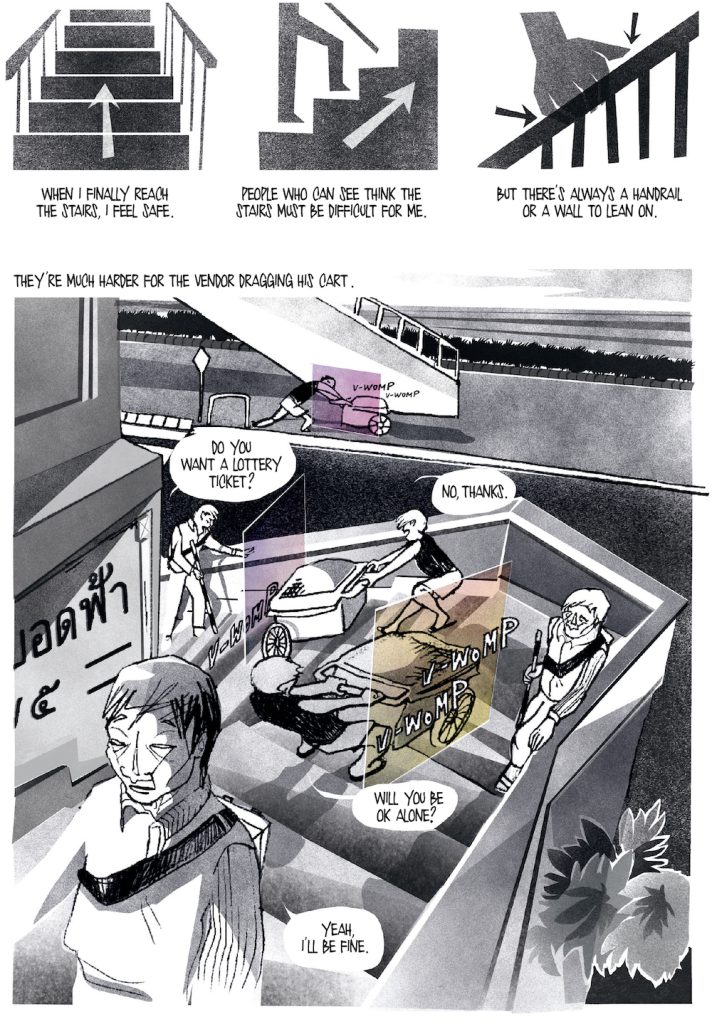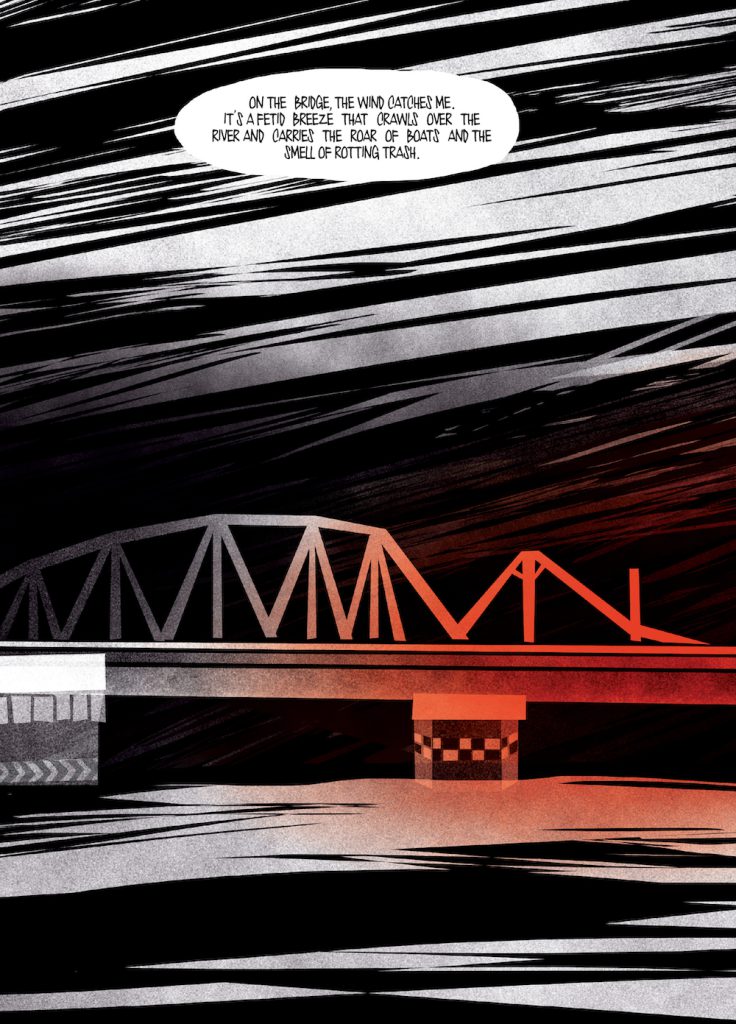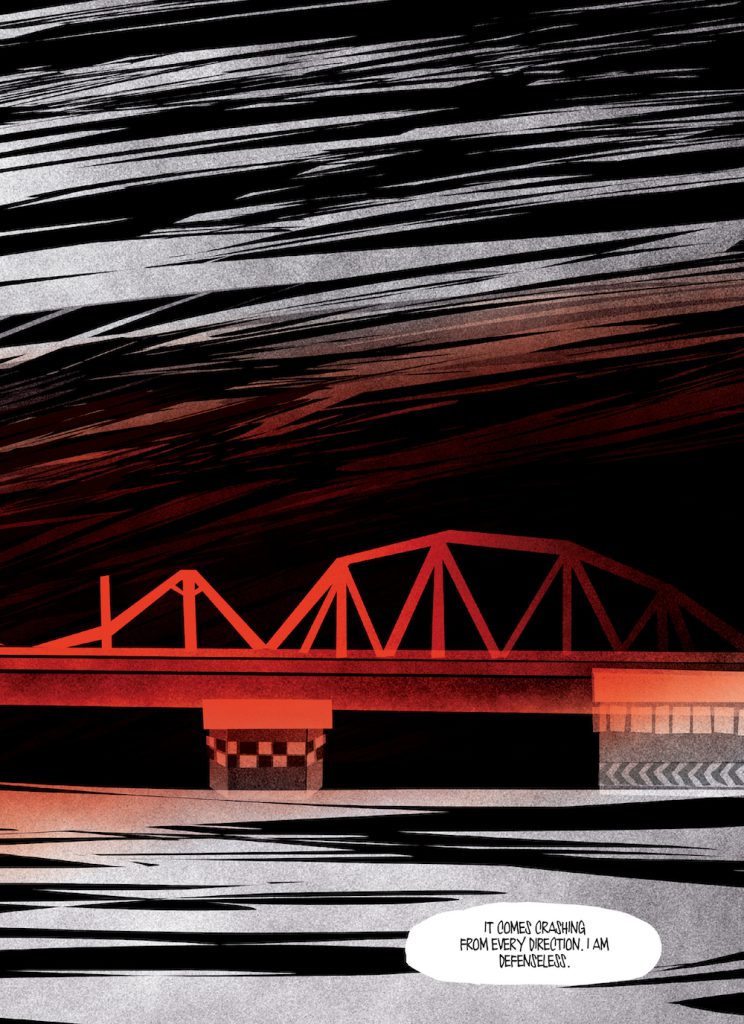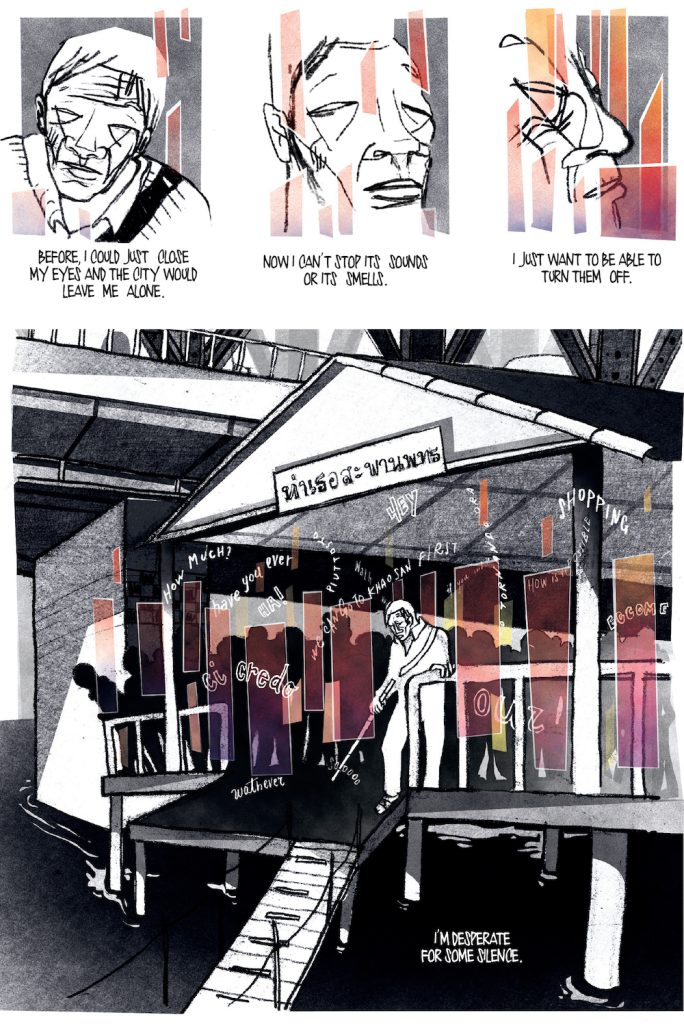When Anthropology Meets the Graphic Novel in Thailand
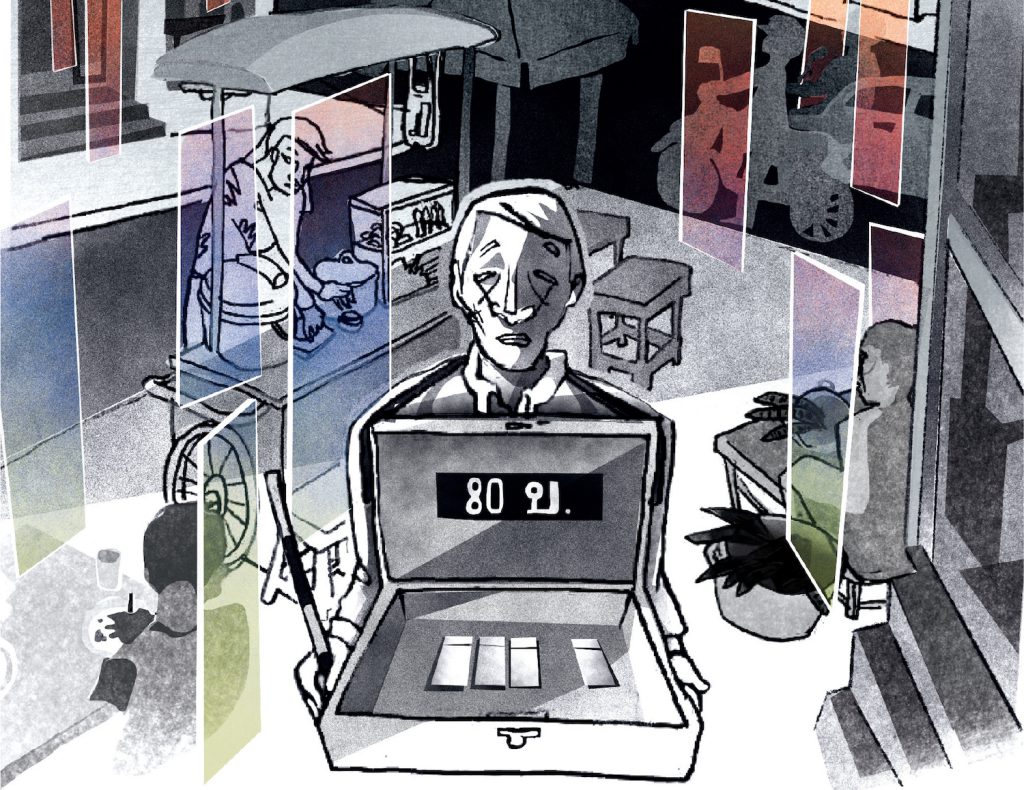
Excerpted from The King of Bangkok. © 2021 by University of Toronto Press. Reprinted with permission from University of Toronto Press.
The anthropological graphic novel The King of Bangkok tells the story of Nok, a blind man who sells lottery tickets in Bangkok, as he grapples with whether to leave the city for good and head back to his native village in the northeastern Thai province of Isaan.
Alternating between reflections on contemporary Bangkok and flashbacks over the course of his life, the graphic novel reconstructs Nok’s journey through the slums of the Thai capital, the rice fields of Isaan, and the tourist resorts of the southern island of Ko Pha Ngan. Along the way, readers relive major political upheavals that have rocked Thailand for several decades—including the violent red-shirt protests of 2010—from one man’s point of view.
The book is the result of a four-year collaboration between anthropologist Claudio Sopranzetti, visual artist Sara Fabbri, and editor Chiara Natalucci. Based on a decade of ethnographic and archival research conducted by Sopranzetti, The King of Bangkok weaves together insights on urban migration, the struggle to maintain relationships with distant families in the countryside, and the sometimes harmful impacts of economic development on workers. Ultimately, it is a story about political awakenings in contemporary Thailand and how the waves of historical changes crash into, engulf, or lift ordinary people.
The following pages come from the beginning of the second chapter, in which Nok reflects on how losing his sight has changed his perception of Bangkok and pushed him to look elsewhere for survival.
—Claudio Sopranzetti

































